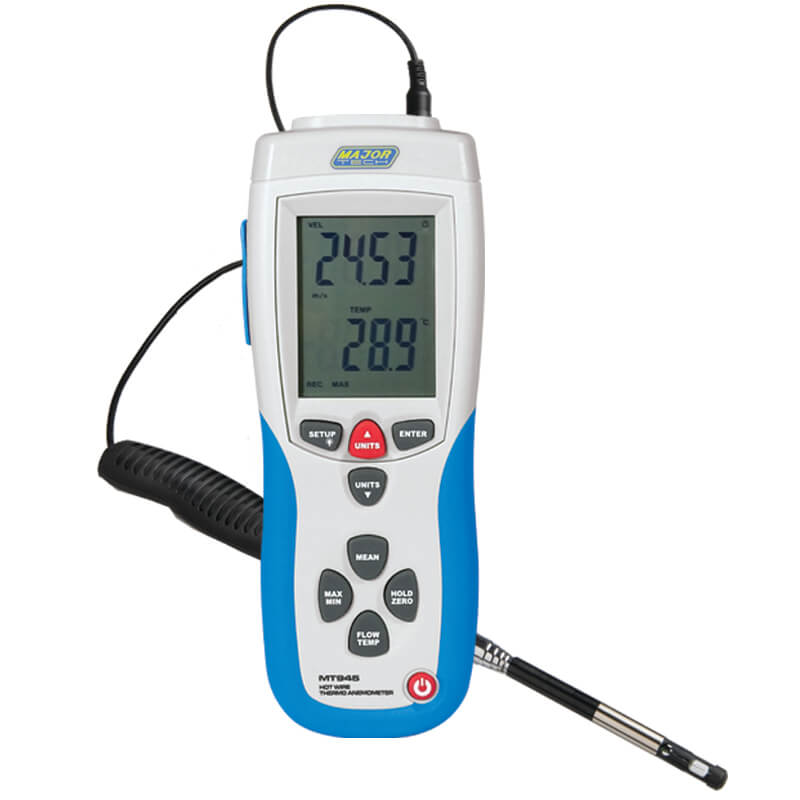How to Maintain and Take Care Of Your Anemometer to Ensure Durability
How to Maintain and Take Care Of Your Anemometer to Ensure Durability
Blog Article
Anemometers Revealed: Recognizing Their Significance in Ecological Surveillance and Precaution
The duty of anemometers in environmental surveillance and safety actions is usually undervalued, yet their significance is obvious. From weather forecasting to air travel safety, anemometers play a critical function in providing precise data that notifies decision-making processes and improves total security.
History of Anemometers
The development of anemometers can be mapped back to the ancient human beings where simple wind determining devices were very first used. These very early wind dimension devices laid the foundation for the growth of extra innovative anemometers in time. Among the earliest known anemometers was the hemispherical cup anemometer invented by Leon Battista Alberti in the 15th century. This design included 4 hemispherical cups that accumulated wind power, offering a measurement of its strength based upon the speed of rotation.
Over the years, innovations in technology led to the development of even more modern-day anemometers, consisting of ultrasonic anemometers and laser Doppler anemometers, offering enhanced precision and efficiency in gauging wind rate and direction. The background of anemometers showcases an impressive trip of development and progress in the area of meteorology.
Types of Anemometers
Throughout the area of weather forecasting, different sorts of anemometers have actually been created to precisely determine wind rate and direction. The most common kind is the mug anemometer, which contains three or four mugs installed on horizontal arms that revolve with the wind. As the cups spin, the speed at which they revolve is directly symmetrical to the wind rate. Another commonly used kind is the vane anemometer, which features a tail or fin that straightens itself with the wind instructions. This positioning allows the device to identify the wind instructions. Sonic anemometers make use of ultrasonic signals to determine wind rate and direction accurately. They are commonly used in research study applications due to their high accuracy. Hot-wire anemometers operate based on the concept that the cooling impact of wind on a warmed wire is symmetrical to the wind speed. These anemometers appropriate for measuring low wind rates with high accuracy. Each kind of anemometer has its staminas and is chosen based upon the specific demands of the monitoring job handy.
Applications in Meteorology
Having gone over the numerous kinds of anemometers utilized in meteorology for gauging wind rate and instructions, it is vital to discover their practical applications in the field. Anemometers play a vital duty in weather forecasting by supplying accurate and real-time data on wind conditions (anemometer). Meteorologists use anemometers to monitor wind rate and instructions to forecast weather patterns, problem cautions for extreme climate occasions like typhoons, storms, and tornadoes, and examine atmospheric conditions for aviation safety and security
In weather forecasting, anemometers assist in comprehending local and regional wind patterns, which are important for predicting weather condition adjustments and figuring out climatic trends. These tools are likewise utilized in study to examine microclimates, urban warmth islands, and air contamination dispersion. Additionally, anemometers are used in agriculture to optimize crop management techniques, such as irrigation and chemical application, based upon wind conditions.
Importance in Aeronautics Security
An integral facet of making certain aviation safety and security exists in the meticulous surveillance of wind problems making use of anemometers. Anemometers play a crucial duty in air travel by supplying real-time information on wind rate and direction, aiding pilots in making informed choices throughout touchdown, take-off, and trip. Solid and unpredictable winds can considerably influence aircraft procedures, making it vital for aviation authorities to rely upon accurate wind measurements to make certain the security of passengers and staff.

In the dynamic environment of aviation, where even small changes in wind rate and instructions can have profound results, anemometers stand as crucial tools for advertising safe and protected air traveling.
Role in Environmental Research Study
Anemometers play a vital duty in ecological study by giving important data on wind speed and direction. By accurately measuring wind attributes, anemometers aid scientists assess the activity of toxins in the air, analyze the impact of industrial discharges, and anticipate the spread of contaminants in the environment.


Final Thought
In final thought, anemometers have played a vital function in environmental monitoring and safety and security procedures. Comprehending the value of anemometers is necessary for precisely gauging wind speed and direction, which is essential for predicting weather condition patterns, making sure secure air travel procedures, and conducting environmental researches.
One of the earliest recognized anemometers was the hemispherical mug anemometer invented by Leon Battista Alberti in the 15th century. Over the years, innovations in innovation led to the advancement of more modern-day anemometers, consisting of ultrasonic anemometers and laser Doppler anemometers, using increased precision and performance in gauging wind speed and instructions. Hot-wire anemometers run based on continue reading this the principle that the cooling impact of wind on a warmed cable is here symmetrical to the wind speed. Meteorologists use anemometers to check wind speed and instructions to anticipate weather patterns, issue cautions for severe weather occasions like cyclones, tornados, and tornadoes, and evaluate atmospheric problems for aviation safety and security.
Understanding the relevance of anemometers is important for accurately measuring wind rate and instructions, which is vital for predicting climate patterns, ensuring safe aeronautics operations, and conducting environmental studies. (anemometer)
Report this page